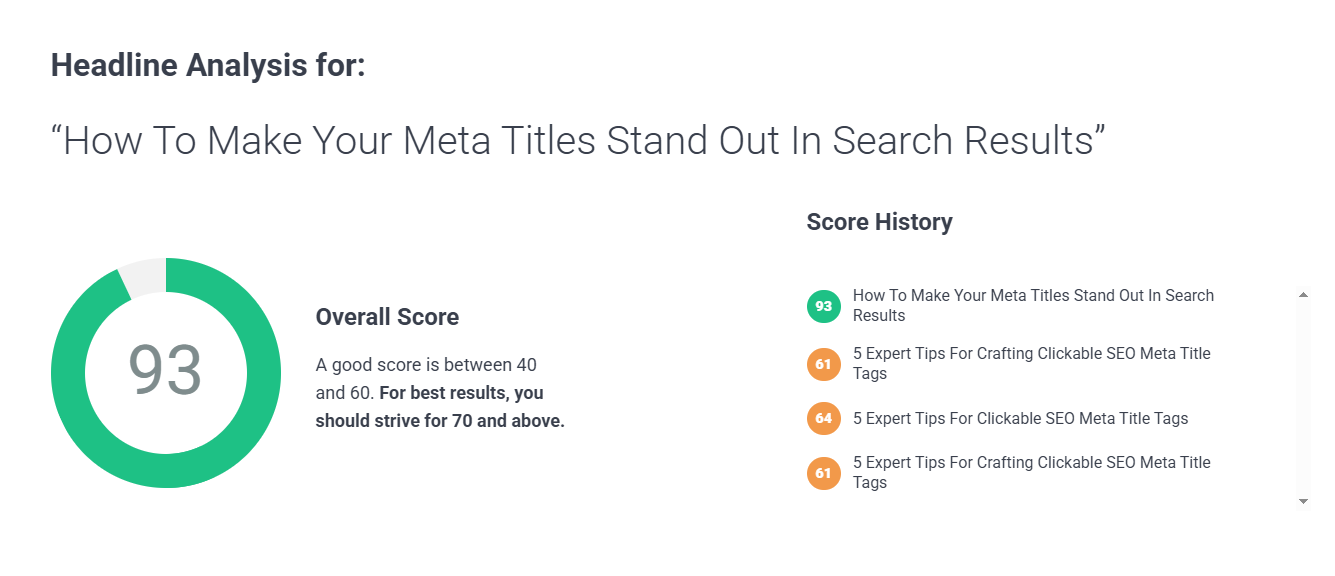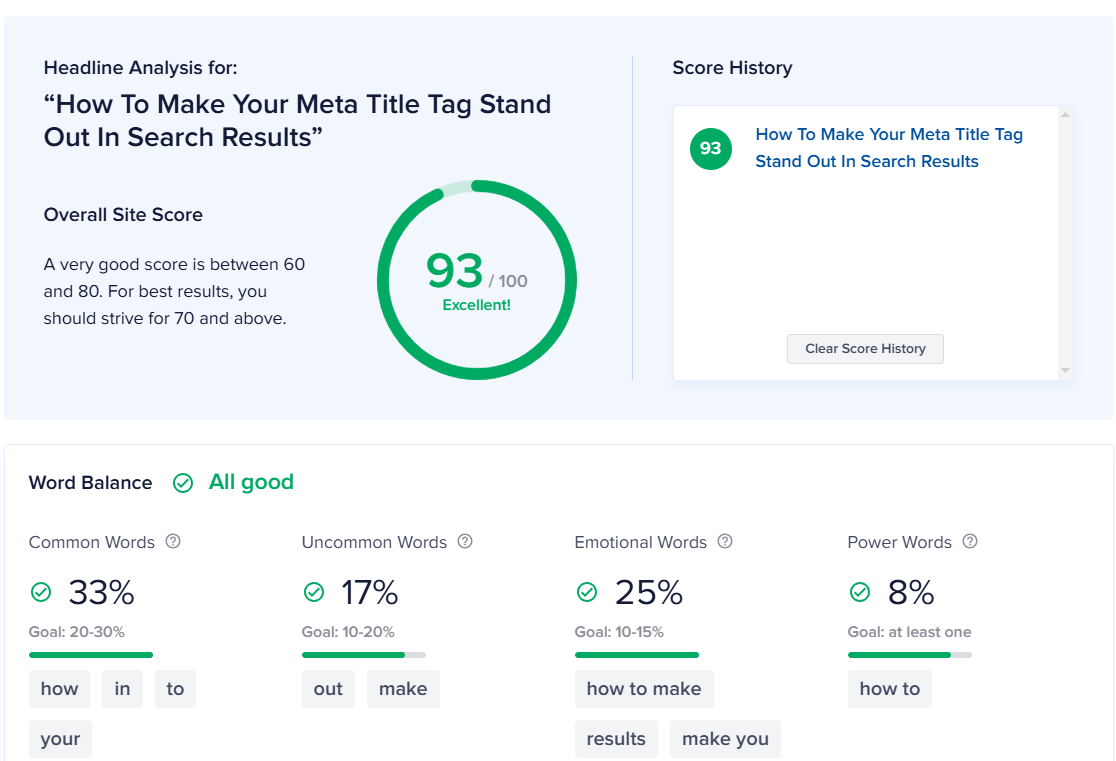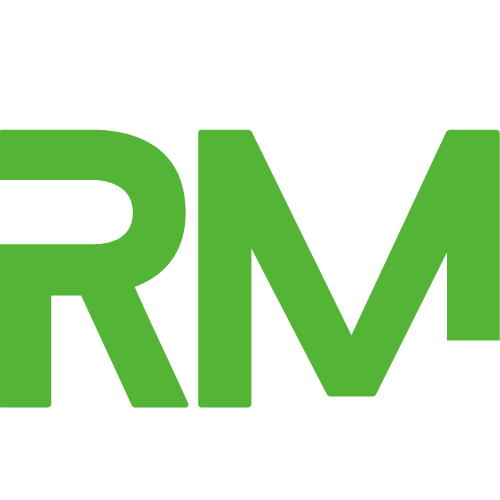Are you seeking to increase the traffic to your blog through the use of a smart, strategic SEO meta title tag? You’re in the right place. In the world of digital content, your SEO meta title tag is often your first and best chance to grab attention—both from search engines like Google and from your next visitor. Whether you run a hobby blog, an e-commerce store, or a content-driven business, learning to craft clickable, optimized title tags can make a significant difference in your visibility and success.
Table of Contents
ToggleIn this comprehensive guide, we’ll explain what SEO meta title tags are, why they matter, and walk you through 5 expert tips (with bonus insights!) to help you write title tags that both Google and your human audience can’t resist.
Ready to boost those clicks? Let’s get started!
What Are SEO Meta Title Tags?
A meta title tag, sometimes called an SEO title, is a snippet of HTML code that determines what page title shows up in search engine results and when your content is shared on social media. It’s what potential visitors see and click in Google, Bing, and elsewhere.
For example, this article’s SEO meta title tag could be
“How to Make Your Meta Title Tag Stand Out in Search Results.“
Your H1 tag or headline doesn’t have to match your SEO meta title tag. In fact, refining your title tag separately gives you more freedom to optimize for clicks and SEO, targeting those all-important searchers as effectively as possible.
Is the SEO Meta Title Tag Really Important?
Yes, they are critical! Here’s why:
1. SEO Meta Title Tag Attracts Users
Think of the last time you searched online. What made you choose one result over another? Most likely, your decision was influenced by the title that most captivated your attention or offered a solution to your query. A captivating title tag can determine whether a user clicks on your page or your competitor’s. A finely formulated title tag should be brief, contain the specific keywords, and show potential for the user to click on, affecting the click-through rates and traffic to the website. More clicks lead to increased traffic, improved rankings, and ultimately greater success for your website.
Core Elements of a Clickable SEO Meta Title Tag:
- Relevance: It should accurately reflect your content. Misleading titles? Just don’t.
- Length: Ideally, keep it between 50 and 60 characters. Any longer, and Google may chop it off.
- Keyword Placement: Your main keyword should appear near the front.
- Uniqueness: Each page needs its own customized title.
- Value Proposition: Is your title offering something irresistible to readers?
- Emotional Hook: Can you trigger curiosity or excitement? This is the key to success.
- Branding: Squeeze your brand name at the end (if appropriate).
2. SEO Meta Title Tag Help Google Crawl and Understand Your Content
Google’s bots crawl and index your site regularly. An optimized title tag signals to search engines what your content is about, helping you rank higher for relevant keywords.
They act as the main identifier of your webpage in the search engine result pages, or SERPs, as they inform both the users and the search engines about the topic of the particular page.
It’s considered one of the most important ranking factors on any given web page.
Pro Tip: Place the main keyword at the beginning of the tag, maximizing search relevancy. This helps Google associate your content with user searches.
How do you change the SEO meta title in WordPress?
If you run your site on WordPress, editing your SEO meta title tag isn’t possible natively. Fortunately, you can easily control your title tags with an SEO plugin. The top recommended options are Yoast SEO, All in One SEO, and Rank Math.
When you create or edit a post, scroll down to the plugin’s settings box (typically below your content editor). There, you’ll find a field for your meta title—simply type your SEO-optimized title here. Most plugins will automatically track your character count and show a preview of how your title will look in search results.
With Yoast SEO:
- Go to Your Post or Page: From your WordPress dashboard, click Posts or Pages and choose the one you want to edit.
- Scroll to the Yoast SEO Meta Box: This section is underneath the main content editor.
- Edit the SEO Title: Click where it says “SEO Title.” You’ll see fields you can edit and a live preview of how your title will look in search results.
- Save or Update: Click Update (for published content) or Publish (for new content) to save your changes.
With Rank Math:
- Please edit your post or page as outlined above.
- Find the Rank Math section, usually at the bottom of the page or in the sidebar.
- Click the “Edit Snippet” button.
- Enter your new SEO title.
- Save or update the page.
With All in One SEO Pack:
- Edit the post or page.
- Scroll down to the AIOSEO Settings section.
- Enter your SEO title in the Meta Title field.
- Update or publish to save.
5 Expert Tips to Create Clickable SEO Meta Title Tags
Supercharging your title tags involves more than just keywords. Let’s explore the five critical steps you should follow.
1. Include Your Target Keyword
After conducting keyword research and finding the most relevant phrase for your content, make sure to include it in your SEO meta title tag. This approach helps both Google and readers immediately know what the page is about. If it’s natural, try placing the target keyword as close to the beginning as possible.
Can You Use More Than One Keyword?
Yes, but use caution. It’s okay to target a secondary keyword if it fits naturally, but avoid clunky or repetitive “keyword stuffing.” For example:
- Good: “How to Make Your Meta Title Tag Stand Out in Search Results”
- Bad: “5 Expert Tips for Crafting Clickable SEO Meta Title Tag, SEO Page Title, Best SEO Titles for Google, SEO Tips for Bloggers”
2. Use Power Words
Power words are emotion-evoking or action-inspiring terms that make your title pop off the page. Examples include “Best,” “Easy,” “Simple,” “Exclusive,” and “Limited.” Using a power word indicates to the reader that your post possesses exceptional value or urgency.
For example, “Stand Out in Search Results” in “How to Make Your Meta Title Tag Stand Out in Search Results.“
Pro Tip: Beware of making your title too long; keep it around 60 characters to avoid getting cut off in search results.
3. Use Proven Headline Formulas
Some formats have earned their reputation for delivering clicks, such as
List Headlines
- 10 Essential SEO Tools Every Marketer Should Use in (Year)
- 7 Powerful Link-Building Strategies for Small Businesses
- 5 Common Technical SEO Issues (and How to Fix Them)
- 12 Must-Know Google Search Ranking Factors
How-To Headlines
- How to Conduct a Site Audit for Better SEO Performance?
- How to Optimize Your Blog Posts for Featured Snippets?
- How to Use Google Analytics to Improve Your SEO Strategy?
- How to Do Keyword Research for a New Website Step-by-Step?
Question Headlines
- What Is On-Page SEO and Why Does It Matter?
- How Long Does It Take to See SEO Results?
- Can You Do Effective SEO without Backlinks?
- Why Did My Website Lose Its Google Rankings Overnight?
Mistakes/Warnings Headlines
- 7 SEO Mistakes That Are Ruining Your Google Rankings
- Top Local SEO Errors Small Businesses Must Avoid
- Are You Ignoring Mobile SEO? Here’s Why That’s a Big Mistake
- 5 Link-Building Tactics That Can Get Your Site Penalized
Ultimate Guide Headlines
- The Ultimate Guide to On-Page SEO for Beginners
- Your Ultimate Guide to Technical SEO: Everything You Need to Know
- The Complete Guide to E-Commerce SEO in (Year)
- Ultimate Guide to Voice Search Optimization for SEO
Comparison/Best-of Headlines
- Yoast vs. Rank Math: Which SEO Plugin Is Best in 2024?
- Best Free SEO Tools Compared: Which Should You Use?
- Ahrefs vs. SEMrush: Which SEO Tool Comes Out on Top?
- Top 5 Keyword Research Tools Reviewed (Pros & Cons)
4. Use Special Characters
Special characters like parentheses, dashes, colons, quotes, or even ampersands (&) can help break up your title and make it easier to scan. Examples:
- “How to Start a Blog (Step-by-Step Guide)”
- “WordPress vs. Squarespace: Which Is Better for (Year)?”
- “5 Easy Methods—Boost Your Email Open Rates”
Just don’t overuse them—balance is key!
5. Use a Headline Analyzer
It isn’t easy to be objective about your title. Enter headline analyzers—tools that score your title on click-worthiness, power word usage, emotional impact, and more. Options include
- MonsterInsights

- CoSchedule

- AIOSEO

Testing multiple variations helps you find the most compelling version before publishing.
Common Title Tag Mistakes to avoid.
- Keyword Stuffing: Repetitive or awkward keyword insertions hurt readability and can even trigger search engine penalties.
- Overly Long Titles: Anything over ~60 characters risks being cut off in results. Make every word count!
- Vague or Generic Wording: Don’t use BRAND NAME in titles like “Post Title – Brand Name”; they mean nothing to searchers or Google.
- Missing Target Keyword: Failing to target your audience’s main search phrase can cost you traffic (and rankings).
- Ignoring Search Intent: Match your title to the purpose of your content—tutorials, lists, opinions, comparisons, etc.
Tools and Plugins for Better Title tags.
Here are a few tools to help you research, test, and implement powerful SEO meta titles:
- AIOSEO: User-friendly WordPress plugin for rapid title and meta tag edits and snippet previews.
- Yoast SEO: Another widely used WordPress SEO plugin for on-page optimization.
- Keyword Research Tools: SEMrush, Ahrefs, Moz, and Ubersuggest to discover the best keywords for your post.
- Headline Analyzers: As mentioned, MonsterInsights, CoSchedule, and AIOSEO provide actionable headline feedback.
Conclusion
SEO meta title tags are one of the easiest and most effective ways to improve your blog’s visibility, click through rate, and overall success. By strategically incorporating your target keyword, compelling power words, proven formulas, special characters, and headline analysis tools, you can create titles that both search engines and readers adore.
Remember, you can (and should) update your SEO meta title tag as your content or strategy evolves. Small changes here can yield big traffic results—so don’t overlook this critical piece of your SEO strategy!
